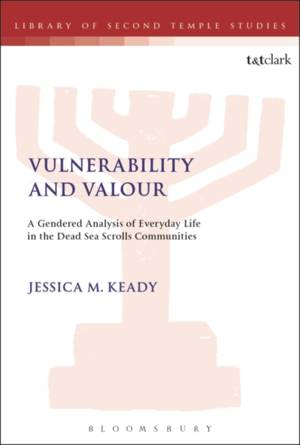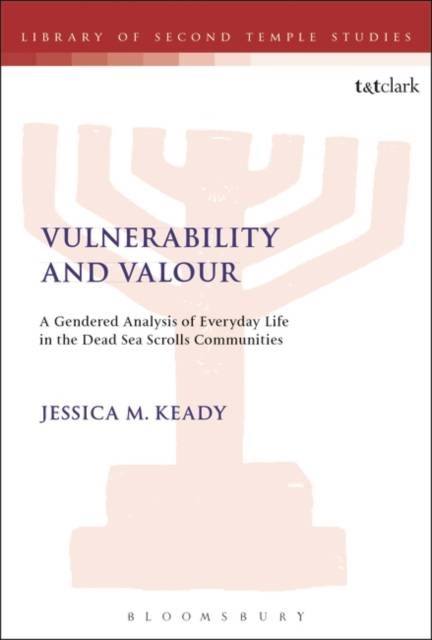
Je cadeautjes zeker op tijd in huis hebben voor de feestdagen? Kom langs in onze winkels en vind het perfecte geschenk!
- Afhalen na 1 uur in een winkel met voorraad
- Gratis thuislevering in België vanaf € 30
- Ruim aanbod met 7 miljoen producten
Je cadeautjes zeker op tijd in huis hebben voor de feestdagen? Kom langs in onze winkels en vind het perfecte geschenk!
- Afhalen na 1 uur in een winkel met voorraad
- Gratis thuislevering in België vanaf € 30
- Ruim aanbod met 7 miljoen producten
Zoeken
Vulnerability and Valour
A Gendered Analysis of Everyday Life in the Dead Sea Scrolls Communities
Jessica M Keady
€ 81,45
+ 162 punten
Uitvoering
Omschrijving
Jessica M. Keady uses insights from social science and gender theory to shed light on the Dead Sea Scrolls and the community at Qumran. Through her analysis Keady shows that it was not only women who could be viewed as an impure problem, but also that men shared these characteristics as well.
The first framework adopted by Keady is masculinity studies, specifically Raewyn Connell's hegemonic masculinity, which Keady applies to the Rule of the Community (in its 1QS form) and the War Scroll (in its 1QM form), to demonstrate the vulnerable and uncontrollable aspects of ordinary male impurities. Secondly, the embodied and empowered aspects of impure women are revealed through an application of embodiment theories to selected passages from 4QD (4Q266 and 4Q272) and 4QTohorot A (4Q274). Thirdly, sociological insights from Susie Scott's understanding of the everyday - through the mundane, the routine and the breaking of rules - reveal how impurity disrupts the constructions of daily life. Keady applies Scott's three conceptual features for understanding the everyday to the Temple Scroll (11QTa) and the Rule of the Congregation (1QSa) to demonstrate the changing dynamics between ordinary impure males and impure females.
Underlying each of these three points is the premise that gender and purity in the Dead Sea Scrolls communities are performative, dynamic and constantly changing.
The first framework adopted by Keady is masculinity studies, specifically Raewyn Connell's hegemonic masculinity, which Keady applies to the Rule of the Community (in its 1QS form) and the War Scroll (in its 1QM form), to demonstrate the vulnerable and uncontrollable aspects of ordinary male impurities. Secondly, the embodied and empowered aspects of impure women are revealed through an application of embodiment theories to selected passages from 4QD (4Q266 and 4Q272) and 4QTohorot A (4Q274). Thirdly, sociological insights from Susie Scott's understanding of the everyday - through the mundane, the routine and the breaking of rules - reveal how impurity disrupts the constructions of daily life. Keady applies Scott's three conceptual features for understanding the everyday to the Temple Scroll (11QTa) and the Rule of the Congregation (1QSa) to demonstrate the changing dynamics between ordinary impure males and impure females.
Underlying each of these three points is the premise that gender and purity in the Dead Sea Scrolls communities are performative, dynamic and constantly changing.
Specificaties
Betrokkenen
- Auteur(s):
- Uitgeverij:
Inhoud
- Aantal bladzijden:
- 240
- Taal:
- Engels
- Reeks:
Eigenschappen
- Productcode (EAN):
- 9780567683885
- Verschijningsdatum:
- 23/08/2018
- Uitvoering:
- Paperback
- Formaat:
- Trade paperback (VS)
- Afmetingen:
- 156 mm x 234 mm
- Gewicht:
- 312 g

Alleen bij Standaard Boekhandel
+ 162 punten op je klantenkaart van Standaard Boekhandel
Beoordelingen
We publiceren alleen reviews die voldoen aan de voorwaarden voor reviews. Bekijk onze voorwaarden voor reviews.









